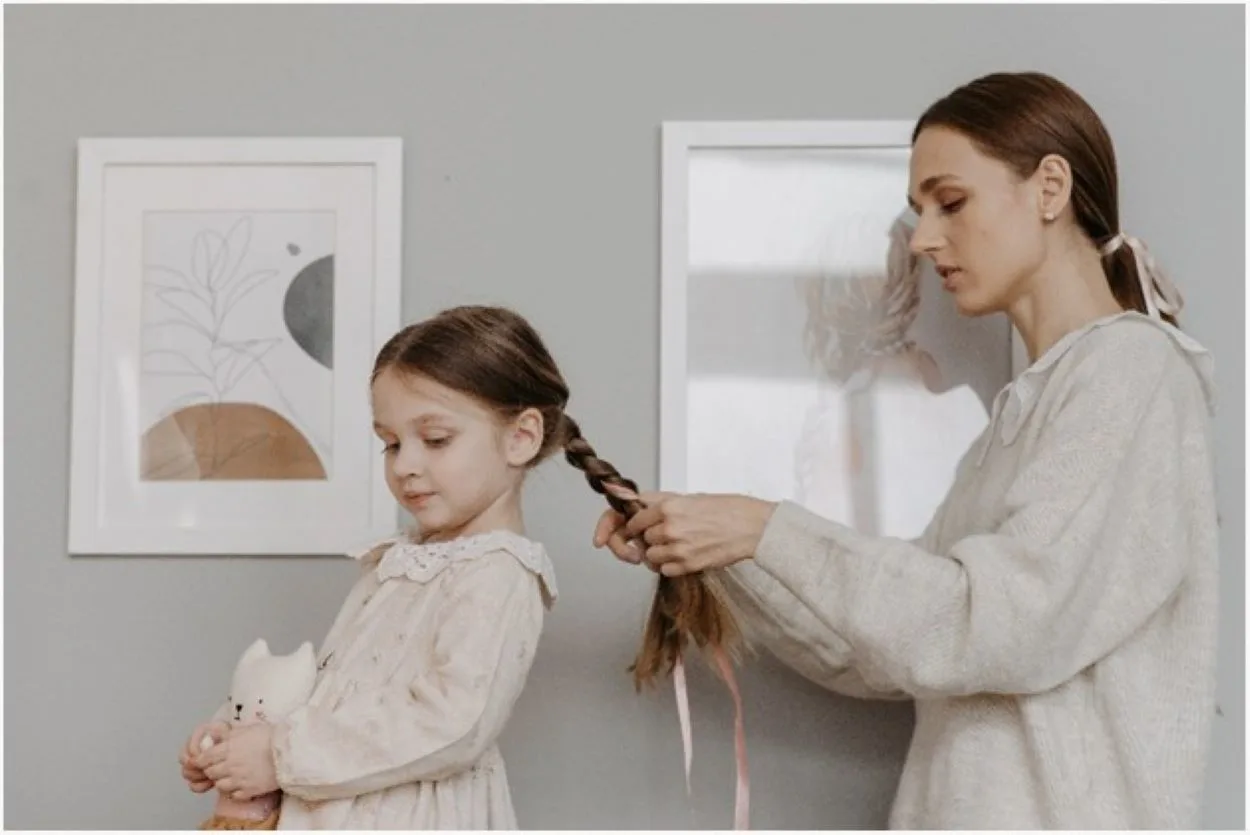Whether you wear casual attire or a fancy dress, a good hairstyle can enhance its beauty. When talking about hairstyles, we have seen that braids are in trend nowadays. Tying your hair in a perfect braid looks glamorous. It keeps your strands away from your face, so you might not get annoyed.
You might have seen that a braided hairdo is well-liked in many cultures. Unquestionably, braids are among the most ancient hairstyles, so you can wear them for self-expression and cultural identity. Take an example of Africans who like to form cornrows and it has become their cultural identity. However, overdoing any hairstyle is not good; try to keep it original.
So, braids do have several categories, two of which I will discuss in this article; the French Braid and the Dutch Braid. Anyone can wear a braid if they have long hair. So there is a braid out for everyone, from little kids to middle-aged women.
This article tells you everything that is relevant to French and Dutch braids. So, depending on which one looks better, you can make either of the two.
What’s A French Braid?
This classic hairstyle has two variations; either you can make it as a single braid or go for double braids. It typically forms from the crown to the back of the neck.
Because it includes weaving the hair in little portions between your three main strands, it differs from a typical braid. It gives your hair a beautiful waterfall-like appearance.
The traditional way is to tie the end of your hair with an elastic band. Of course, you can form these based on your personal preferences.
You may, for instance, merely style half of your hair to highlight its length. Moreover, you are free to adjust how tight or loose your hair would be. It’s a very versatile and highly customizable style.

Defining The Dutch Braid
Similarly, Dutch braids can also be made in two ways i.e. single and double. The method is much the same, but it has a subtle twist. While making Dutch braids you’ll have to cross the left strands from under the middle strands as opposed to French braids where you’ll cross the left strands from over the middle strands.
It looks like a three-dimensional braid perched on top of your hair, with each strand neatly tied underneath rather than a waterfall braid that cascades down your neck. It is incredible how slight alterations of the same technique can result in so much diversity; it is a refreshing, exotic, and one-of-a-kind style.
Dutch Braid Vs. French Braid: What’s The Difference?
Despite their similarities, as both fall into a braided category, they also have some differences. I am jotting down their differences. It will clear all your confusion if you carry some. However, it doesn’t mean one is better than the other; it depends on your preference. So firstly, I will share the main contrast between both.
- Dutch Braid is an inverted version of French Braid, similar to how these nations’ flags differ from each other. The technical difference between the two is that the French braid is weaved on top while the Dutch braid is weaved at the bottom.
- French braids include crossing the strands over the other, whereas Dutch braids involve crossing the strands underneath. Dutch braids are also referred to as reverse French braids because of the “inside-out appearance” this technique creates.
- Dutch braids have a greater volume than French braids, which are often tighter. Both certainly look beautiful, but the French braid reduces the hair volume, while the Dutch braid looks heavier.
- The French braid has a more classic appearance, whereas Dutch braids lean toward the trendy side and look much more modern.
Try out both the French and Dutch versions, but remember to use the desired accessories, and most essential, add some extensions for length. Have a great time finding your perfect look.
Is Dutch Braid A French Braid?
Not precisely, a Dutch braid is not a French braid; however, they have some similarities. A Dutch braid is assumed to be a reversed French braid, as we have already discussed above.
Dutch braid requires a section of your hair to cross from under the other strand whereas French braid requires you to cross a section of your hair from over the other strand. This is the main difference between the two which will result in two very different hairstyles.

Which One Is Better: A Dutch Or A French Braid?
Both hairstyles look well on all hair types. The Dutch braid is for you if you’re seeking a little extra. This intricate-looking relative of the French braid—surprisingly easy to do—will give you a gorgeous hairstyle within minutes.
French braid is appropriate for short to long hair, while Dutch braid looks fantastic on medium to long hair. Unlike the Dutch braid, the French braid requires only three sections of hair and has a looser, more arranged appearance. It looks flat and seems to be under the hair, whereas, a Dutch braid is more noticeable and seems to be protruding out of the hair.
Techniques for making both braids
How to form a French Braid?
Try French Braid at home if you are looking for any tutorial or method. Here I am sharing simple steps so you can follow them and will end up with a beautiful look.
- Comb your hair smoothly to remove all the tangles, which can create a hindrance in any hairstyle. It’s a fantastic idea to add a little texture to your hair. A texturizing spray is a terrific product to add volume to clean hair while also giving it extra grip, making braiding more simple.
- Gather three strands from the crown area. Now tightly cross the right section of hair over the middle strand. After that, cross the left section of hair over the middle strand.
- After doing this procedure a few times, incorporate additional layers. You’ll now take a short portion of hair from one side and join it with the strand before crossing the left or right section over the middle. Make sure to gather a straight line of hair from the hairline to the area where the braid takes shape.
- Continue this process until no hair is left to add further.
If you want to make two braids, divide the hair in half, then do the same for the other half of the hair as well. To make cornrows divide the hair into as many portions as you desire and repeat this procedure for every portion.

How to form a Dutch Braid?
- When you start making Dutch braid, begin with well-combed hair. You can make a Dutch braid on dry and damp hair, but it must first be combed and clear of any tangles or knots.
- Then comb your hair straight back. To grab a portion from your front hairline, run your thumbs through your hair.
- Place three strands in your left and right hands, respectively. With your small finger, hold the left strand against your palm, letting the middle strand hang over your middle finger. They will remain apart as a result.
- Crossing the right, left, and central strands will create a new middle strand. Flipping these two strands under rather than over as you would do with a regular braid is important. Dutch braid won’t look good if you don’t follow these instructions.
- After that, add a small section of hair to the original strand from the right hairline. Cross the two sections under the central strand while treating them as one. Use your fingers to ensure the braid is tight and smooth. Repeat the same procedure on the left side as well.
- Continue making Dutch braid until you reach your neck’s nape. Make sure to equally distribute the remaining hair as you gather it into the right, center, and left strands.
- If you want the braid to be fuller, loosen the outer strands. Now secure the end with a rubber band.
Trendy & Classic French and Dutch Braids
Sharing some exotic French and Dutch Braid hairstyles;
The double braid style is among the most traditional variations of Dutch braids.
| Dutch Braid | French Braid |
| Dutch Braid Crown | French Braids in two |
| Dutch Braid Pigtails | Pigtails in a French braid |
| Dutch Fishtail Braid | Fishtail Braid in French |
| Dutch Braid for Short Hair | Bun with a French braid |
| Dutch Braid into Ponytail | French braid on the side |
| Two Dutch Braids with Buns | Ponytail French Braid |
| Half Up Half Down Reverse French Braid (Dutch Braid) |
Bottom Line
- A nice hairdo can enhance your appearance whether you’re wearing a business, casual, or fancy dress.
- Braids are currently fashionable hairstyles.
- These braids are undoubtedly among the oldest hairstyles, so you can wear them to reflect your personality and ethnic identity. Don’t stuff the hairstyle; always attempt to retain the originality.
- This article shares the difference between two unique braided hairdos; French Braid & Dutch Braid. These braids look amazing and give you a glamorous and stylish look.
- Because of its “underneath” method, the Dutch Braid is frequently called a “reverse French braid” or an “inside-out braid.”
- The contrast between the two is that the French braid you weave it on top, whereas a Dutch one underneath.
- Dutch braids have more volume than French braids, which are frequently tighter. Both are undoubtedly attractive; however, the Dutch braid appears thicker while the French braid has less volume.
- Both are simple and stunning, so if you make them perfectly, you will look damn sophisticated.
- If you initially carry thick hair, it’s a recommendation to try French Braid; it will look more admirable than the Dutch. Similar is for the ladies having thin hair, make a Dutch one; it will increase the volume.
Other Articles
- Philadelphia VS San Francisco (Differences)
- Wizard VS Witches: Who’s Good And Who’s Evil?
- What Is The Difference Between Samoan, Maori, And Hawaiian? (Discussed)
- What Is The Difference Between Burberry And Burberrys Of London?
- The Difference Between A Coach Purse Bought At The Coach Outlet Vs. A Coach Purse Bought From The Official Coach Store

